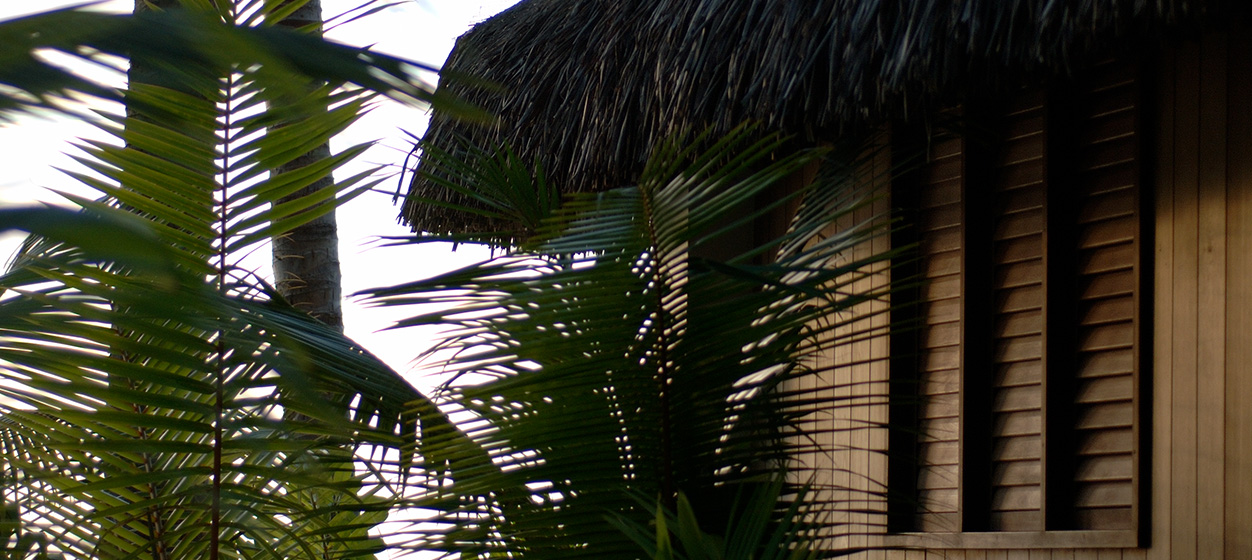"Trees", Pablo Reinoso
Liaigre invites Franco-Argentinian artist Pablo Reinoso to 77 rue du Faubourg Saint-Honoré in Paris, under the workshop skylight. Internationally recognized for his work at the intersection of sculpture, installation, design, and architecture, he continually questions our relationship with the natural world.
Curator: Carlos Sicilia in partnership Xippas galleries
Photographers: Sylvie Becquet, Rodrigo Reinoso
See details
Liaigre invites Franco-Argentinian artist Pablo Reinoso to 77 rue du Faubourg Saint-Honoré in Paris, under the workshop skylight. Internationally recognized for his work at the intersection of sculpture, installation, design, and architecture, he continually questions our relationship with the natural world.
Curator: Carlos Sicilia in partnership Xippas galleries
Photographers: Sylvie Becquet, Rodrigo Reinoso
Close
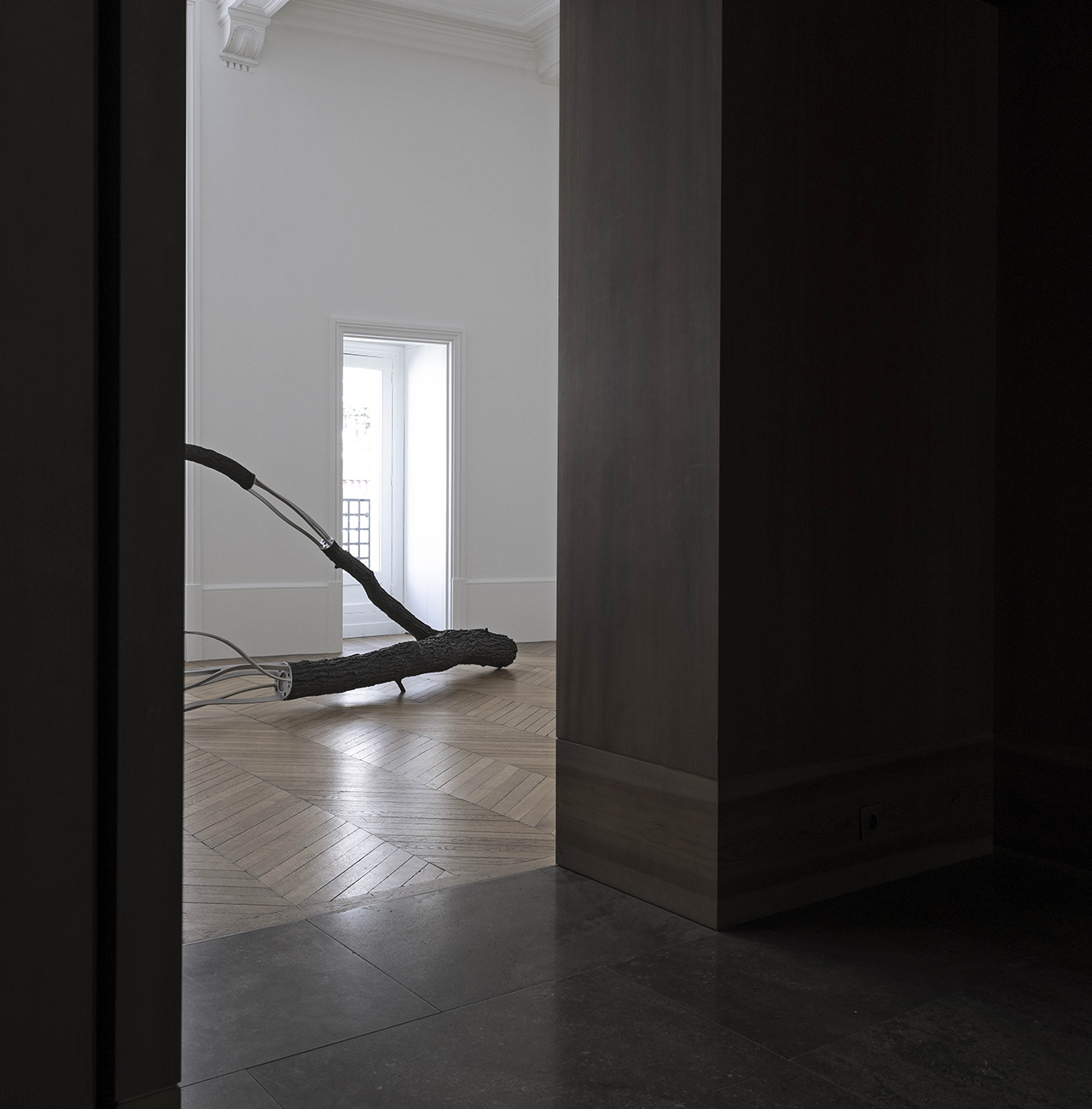
With the exhibition «Trees,» Pablo Reinoso presents a body of work centered around trees, symbolizing the encounter between nature and culture. His practice explores the vitality of living things through the principle of plant growth applied to materials and a conceptual shaping of the fundamental cycles of life.
Sensitive to the climate challenges that define our era, Reinoso has been interested in these issues since the 1980s with the series Articulations and Paysages d’eau. In recent years, Reinoso has continued this work with the «Trees» series, which he began in the late 2010s, questioning the balance between human and natural ecosystems.
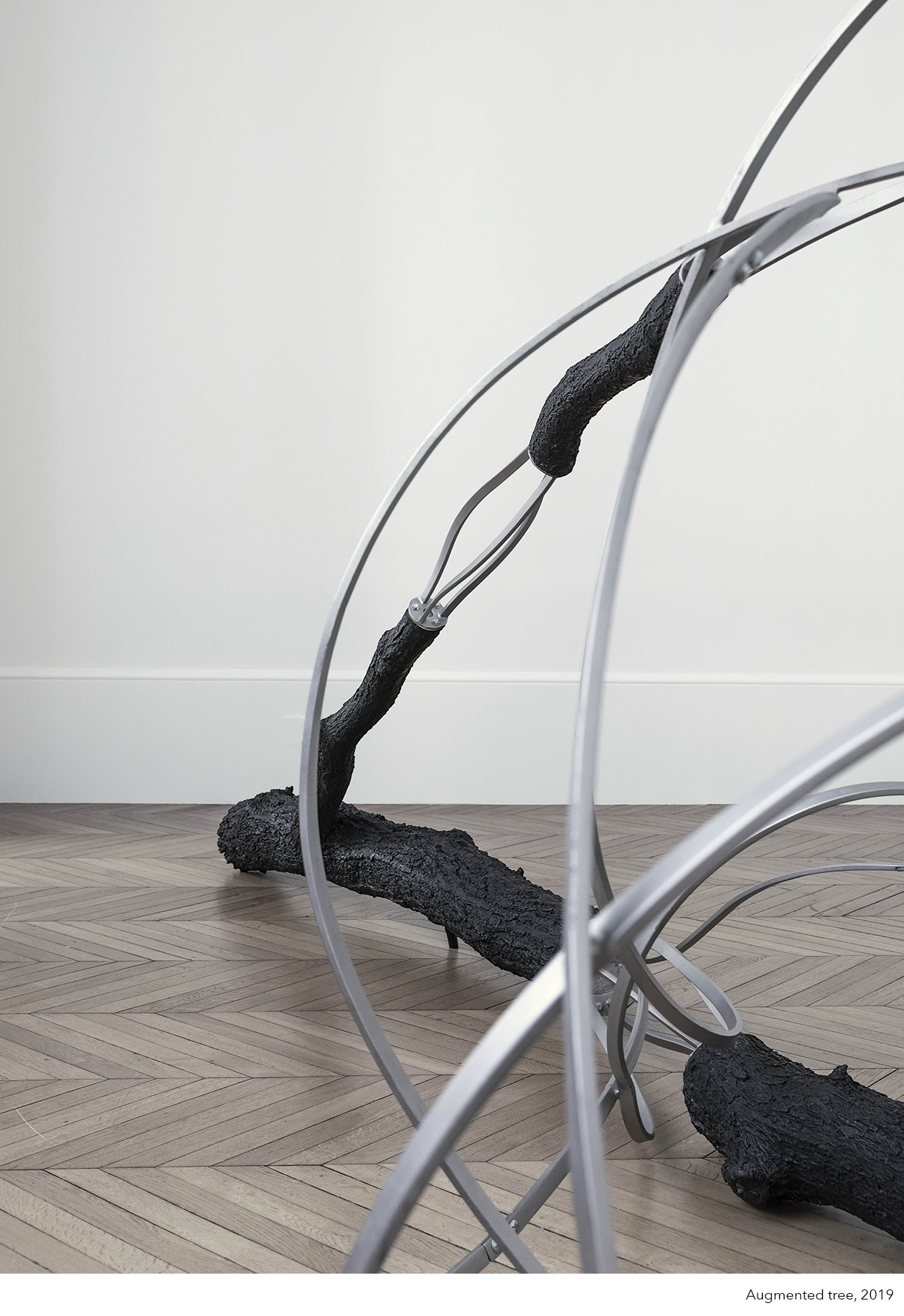
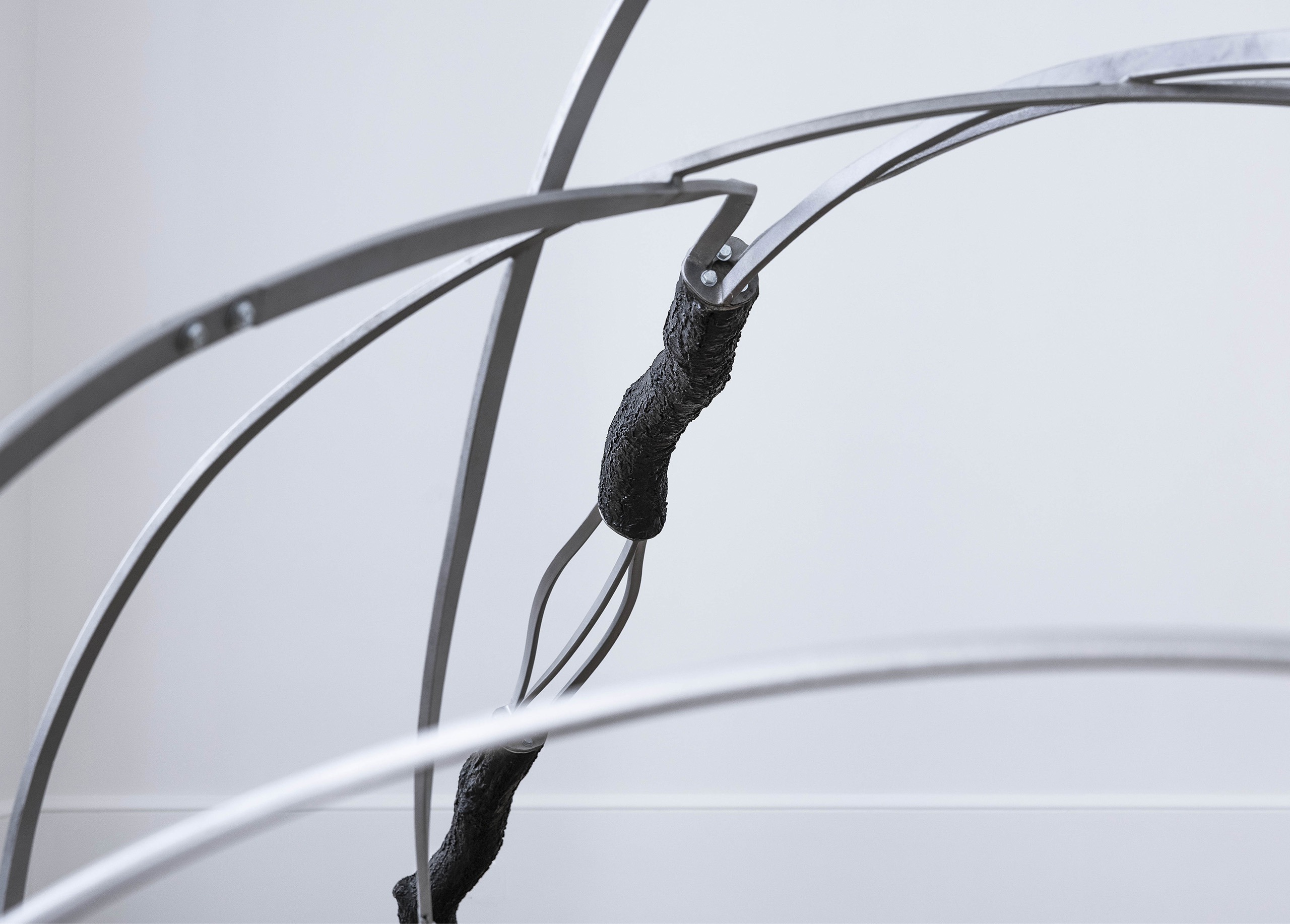
With the sculpture Augmented Tree (2019), presented under the workshop skylight, the artist explores these themes through the juxtaposition of materials. He uses steel, a symbol of human industrial activity, and wood, which he sculpts from its raw state before casting it in bronze. As often in his work, Pablo Reinoso plays with the idea of inversion by using an industrial material to serve nature: the metal rods reconstruct the branches of a tree felled by a storm, supporting each section of the trunk, which unfolds organically, sustained by its
artificial support. Thus, industrial metal supports and extends this tree, which, in this context, becomes a remnant. The metallic covering makes the tree visible, forming a casing around it. Like an exoskeleton or a prosthesis—as suggested by the title Augmented Tree—the metal breathes new life into the natural element, bringing nature back to the forefront. The metal extensions evoke a plant growth that was once alive and is now extended by human intervention.
Several sculptures from the Uprooted series are displayed across the floors. Pablo Reinoso once again fuses the characteristic metallic scrolls of his sculptural works with the organic forms of tree branches. The base of each piece serves as a resting structure for the natural element, which continues its growth in a whirlwind of intertwined lines. Each sculpture has a unique structure, built on a delicate balance between stillness and movement, suggesting both strength and fragility. This fusion of artificial and natural materials also suggests a form of interdependence, an inextricable link between human and natural forces. Explicitly referencing the notion of uprooting, Pablo Reinoso’s Uprooted sculptures evoke the complexity of our relationship with the natural world. While they allude to the impact of human activity on our ecosystem, they also suggest new possibilities for existence and coexistence.
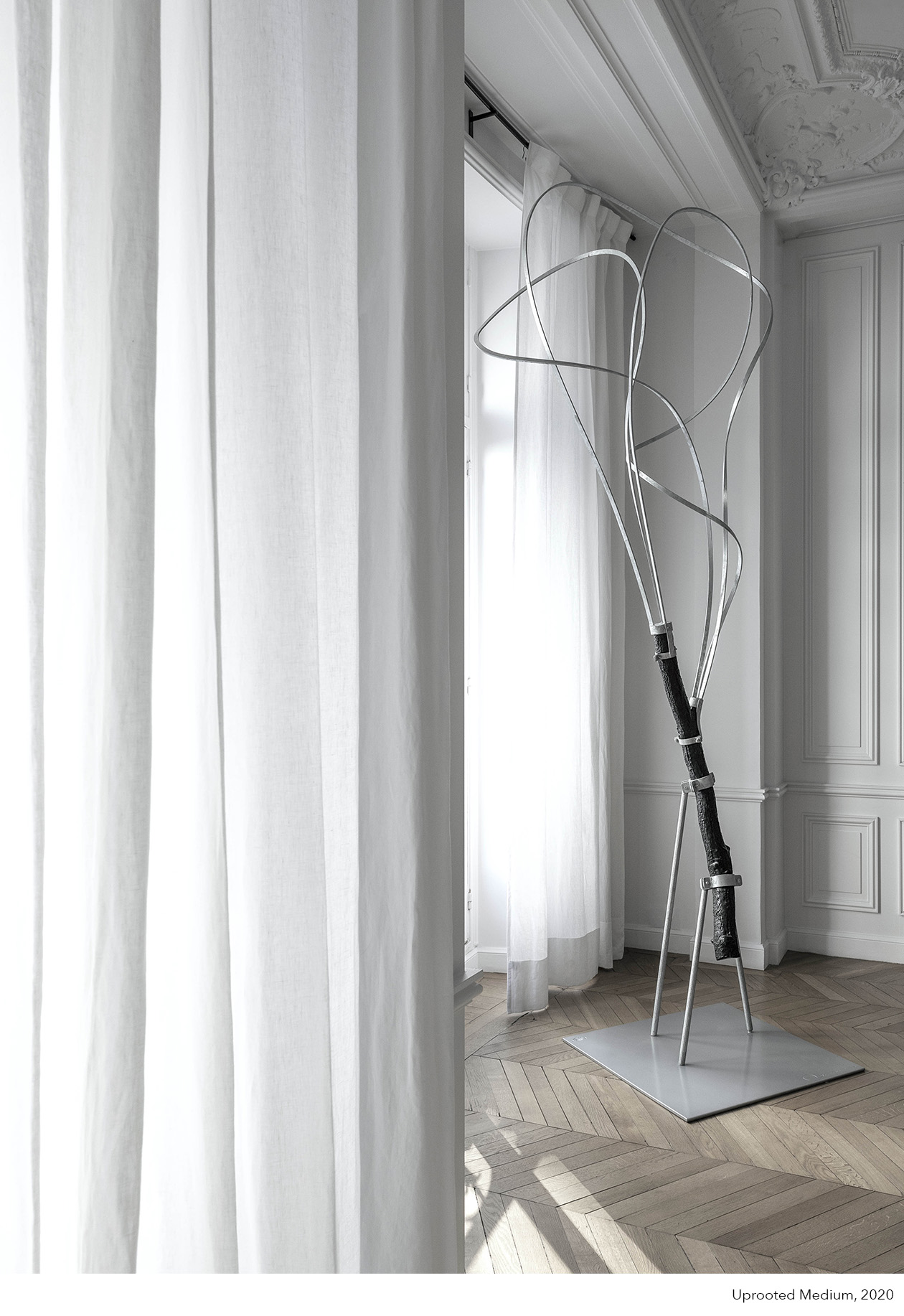
Pablo Reinoso’s works demonstrate a deep respect for nature, an ethical stance, and a genuine fascination that extends to imitation, generating «landscapes, movement, waves, ripples, life, time, and breath.» He sculpts the forms of life into matter.
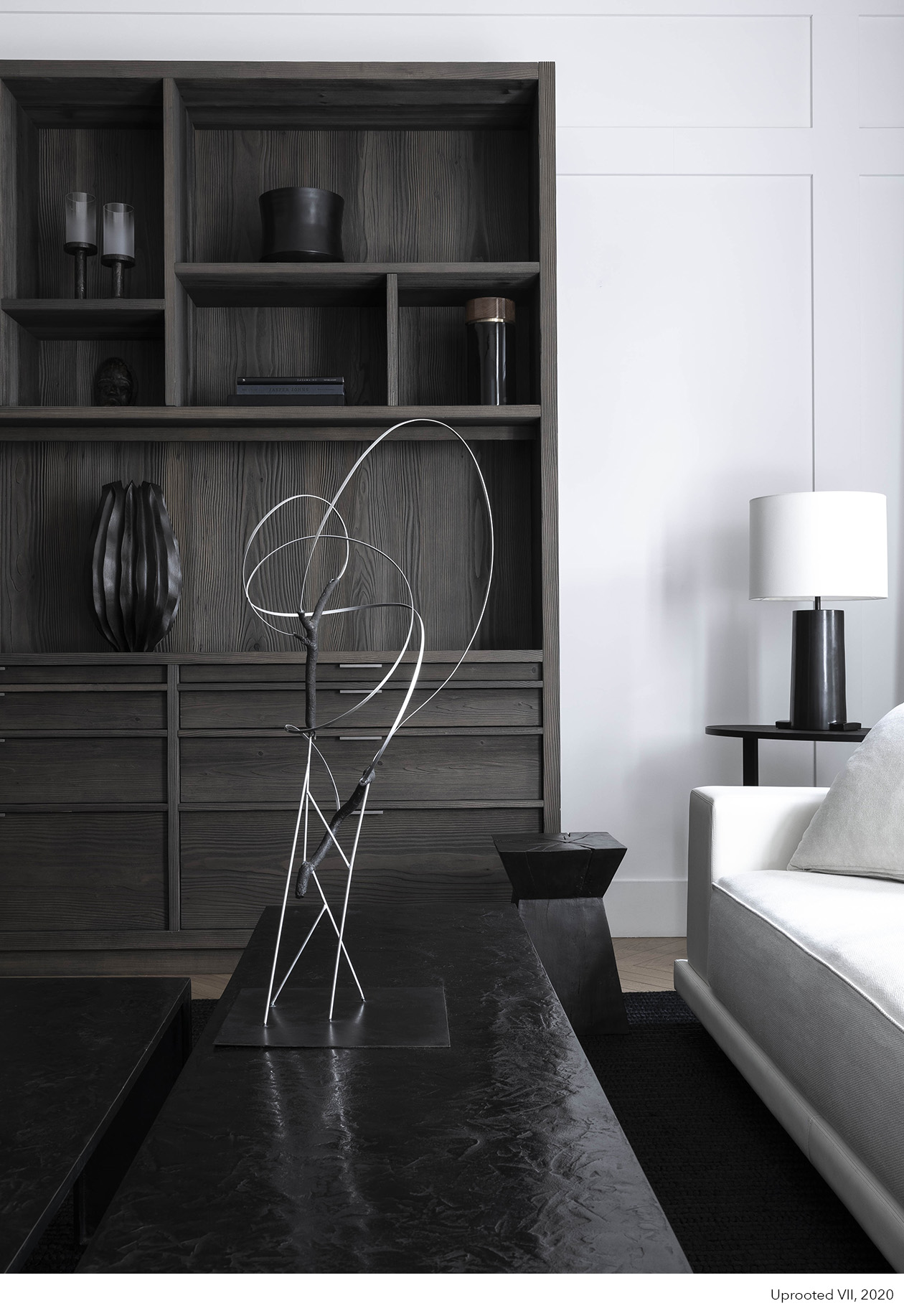
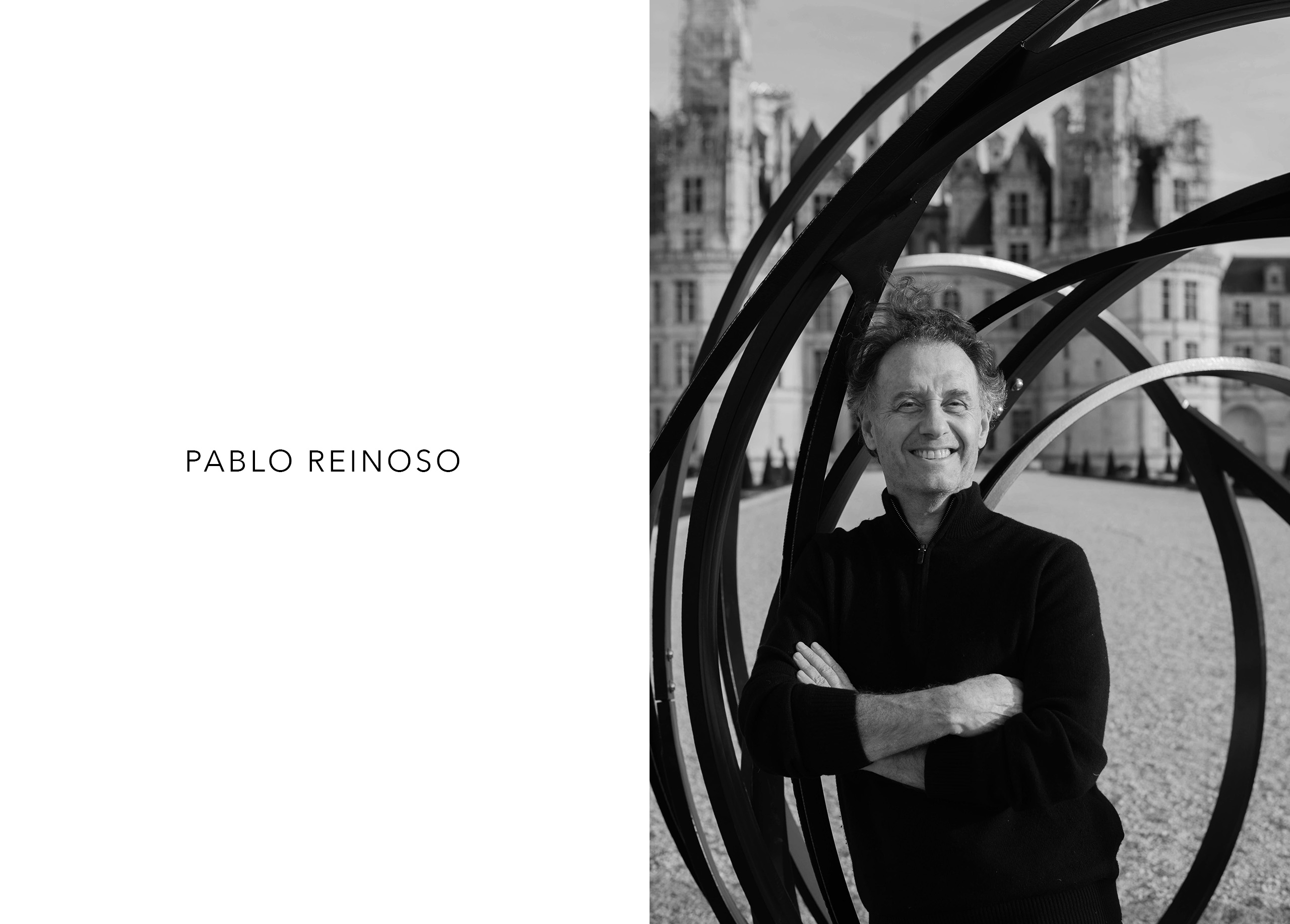
Pablo Reinoso (born in Buenos Aires in 1955) is a multidisciplinary artist. He has lived and worked in Paris since 1978. His practice spans the fields of sculpture, installation, design, architecture, and painting, all of which he approaches by questioning their nature and boundaries. Since the 1970s, the artist has developed a protean body of work, through which he explores material and the plastic and conceptual possibilities it conveys. Organized in series, his work multiplies mediums, which he explores in all their potential variations, beyond the constraints presented by the material. This research is accompanied by a reflection on the notions of object and functionality, whose relationship is perpetually reconfigured by the artist. Created using raw construction materials or objects derived from architecture and design, his works follow a logic of emancipating the object or material from its primary function, often achieved through repurposing.
Since the 2000s, these inquiries have materialized in the artist’s work on seating objects, which feature prominently in his recent creative output, particularly in the series Thoneteando, Bancs Spaghetti, and Garabatos. The relationship to space is also at the heart of Pablo Reinoso’s work. Often created in situ, his works maintain a deep connection with the places in which they are installed, thus questioning our way of being in space, both in terms of perception and usage. Anchored in public spaces and often monumental, these creations inherently have a social purpose; within urban and natural environments, they foster interaction among users, creating new opportunities for exchange, conversation, or meeting. In recent years, the artist has undertaken numerous large-scale projects in public and prestigious locations, including in Lyon (Nouages, 2013), at the Élysée Palace (Racines de France, 2016 and Fleuves de France, 2024), in London (We Watch You Too and Only Children’s Bench, 2016), in Buenos Aires (Aires de Buenos Aires, 2019), and in South Korea (Busan Infinity Line, 2019).
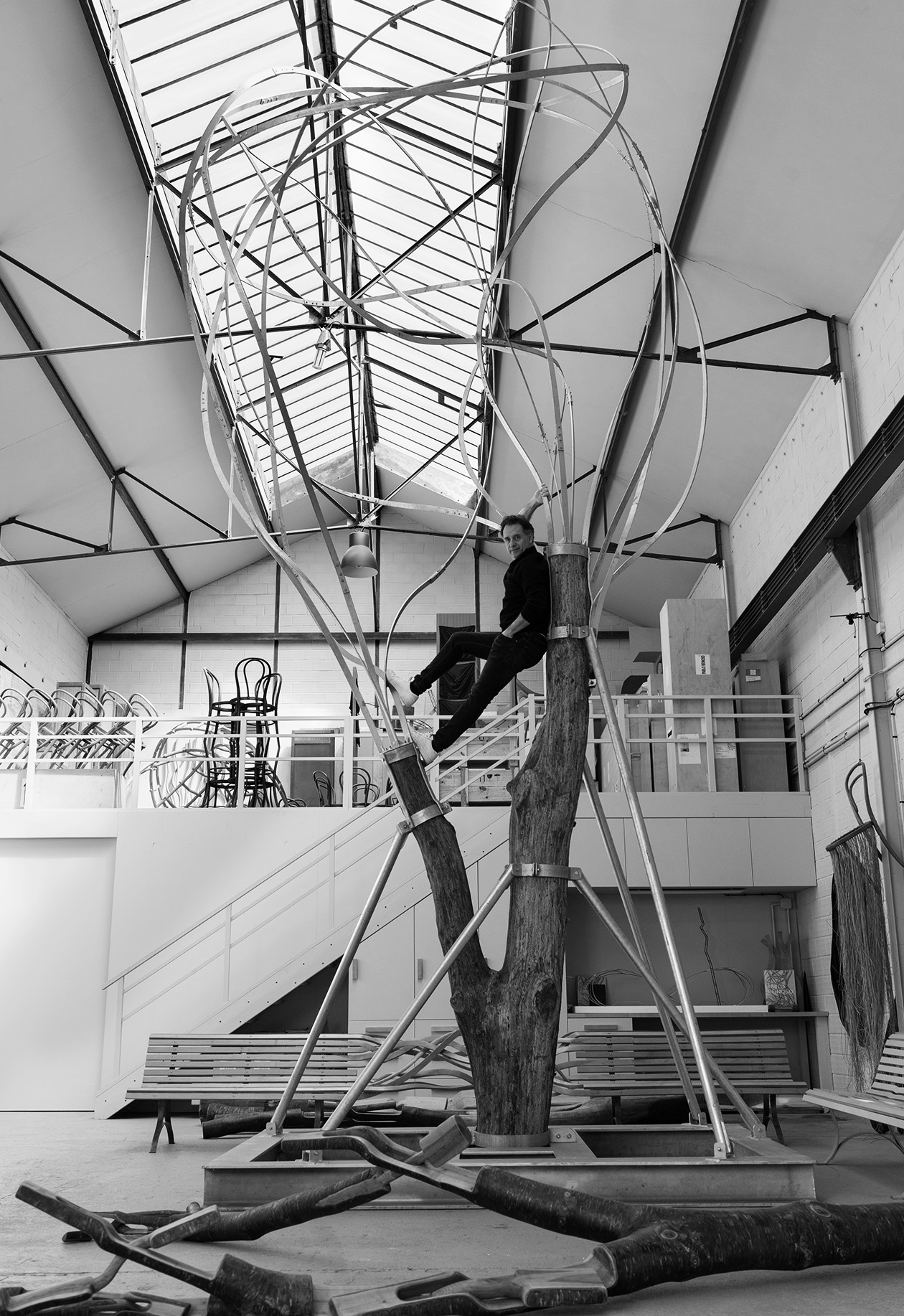
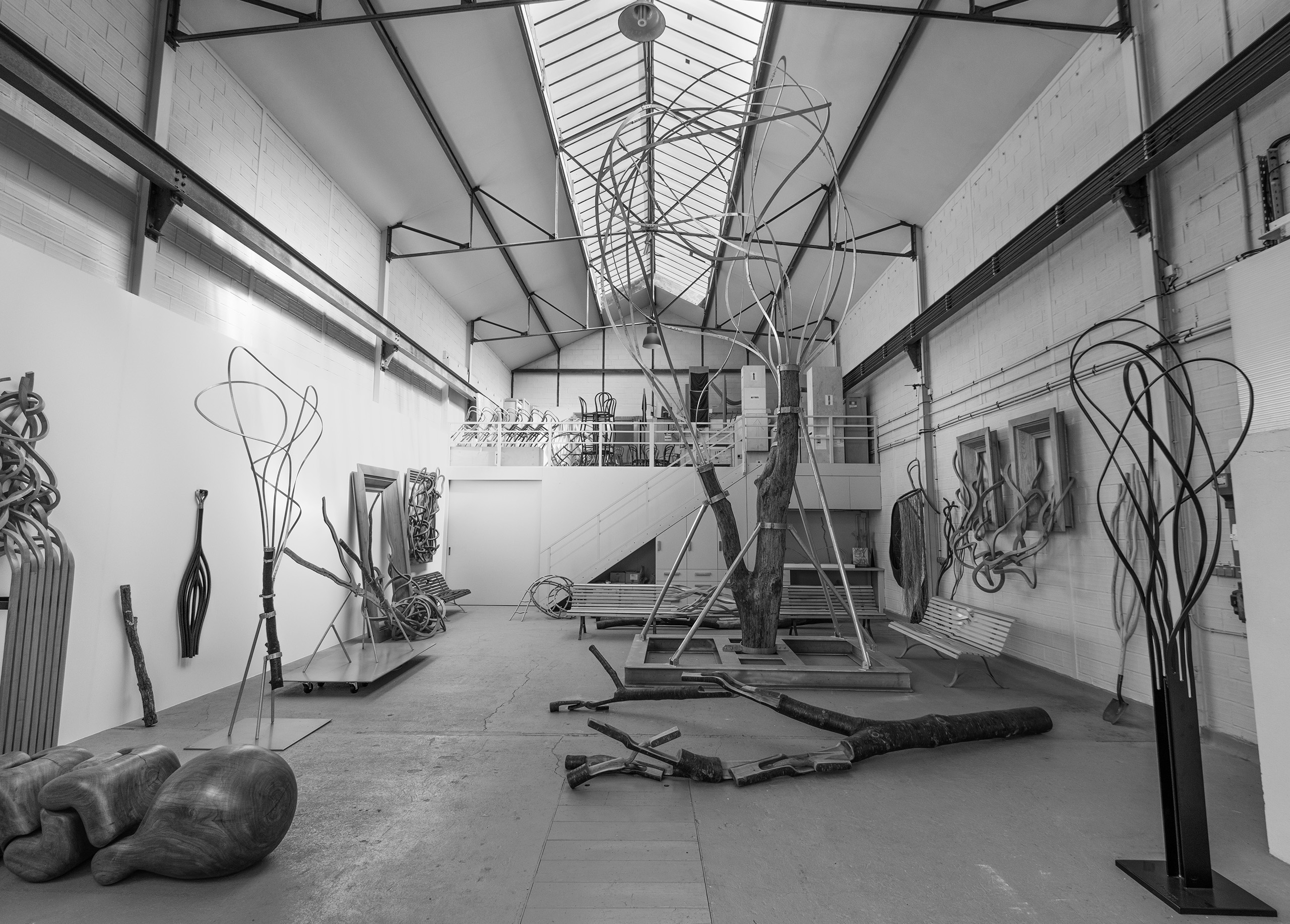
Sensitive to the issues of our time, particularly the climate crisis, Pablo Reinoso explores these themes in his recent works, questioning the balances that govern human and natural ecosystems. Among his iconic works, the Bancs Spaghetti are above all a tribute to plant intelligence, to the arrangements it adopts in order to sustain its growth. Since 2020, the artist has also been developing a body of paintings, allowing him to continue his formal and conceptual exploration with renewed energy. This year, Pablo Reinoso’s work is exhibited at the Museo Extremeño e Iberoamericano de Arte Contemporáneo (Badajoz, Spain), Hangar Y (Meudon, France), and the Centre Pompidou-Metz. In 2022, his work was the subject of a major retrospective at the Château de Chambord (Loire Valley, France), taking place in both the interior spaces and the Château gardens. The artist’s work has
been exhibited in international institutions and major art events, including the Musée d’Art Moderne de la Ville de Paris, the Centre Georges Pompidou, the Palazzo Al Bosco (Tuscany, Italy), the Kunstmuseum den Haag (The Hague), Sciences Po (Paris), the Museum of Arts and Design in New York, the Grassi Museum in Leipzig, the Boghossian Foundation in Brussels, the Metropolitan Art Museum of Tokyo, MUDAC in Lausanne, CID – Centre for Innovation and Design at Grand-Hornu, the Venice Biennale, FIAC Hors-les-Murs, Bienalsur, and AGORA, Biennale of Bordeaux. His works are part of the collections of MALBA and the Museum of Modern Art of Buenos Aires, the Fonds National d’Art Contemporain in Paris, the Museum of Modern Art of São Paulo, MACRO Rosario, and MUSAC in León, Spain.
Discover other
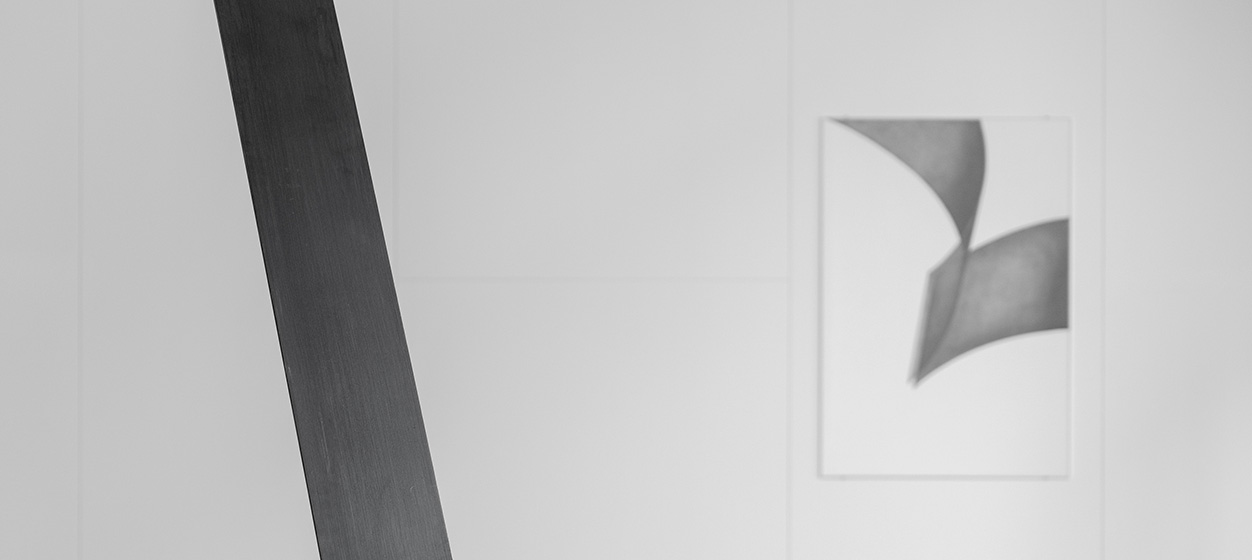
≃ Mathieu Bonardet
